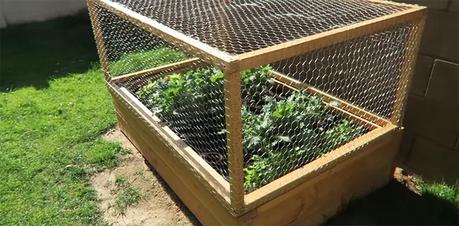We may enjoy watching wildlife on our big TV screens, however dealing with it in real life can be far from the beautiful imagery we are being shown in nature documentaries. Having a beautiful garden requires a lot of hard work and it is no surprise that no one wants to see his or her work being destroyed. Wildlife can be a tiny enemy in keeping our garden safe and tidy, but there are some steps you can take to keep the animals out of your property.
Identify unwelcome guests
This should always be the first action you want to take once you notice an animal taking interest in your garden. Identifying the wildlife that is causing trouble and damage near your property will help you with learning and understanding the habits of that animal. Possessing this knowledge will then help with coming up with an effective solution that will help you get rid of unwelcome guests.
Fence and plant covers
Surrounding your garden with a fence is considered one of the most effective ways of keeping critters at bay. Depending on what kind of wildlife you are dealing with, you may consider different heights of a fence – for example if deer are causing you trouble, you should choose a fence around 6 – 8 ft. high. On the other hand, short mesh fencing will help with unwanted guests such as rabbits.
Sometimes, you may notice that only certain plants are being attacked. In this situation, you may want to consider plant covers – for example wire cloche or chicken wire. If you are worried about seeds or small, tender plants, you can consider using a floating cover made of poly spun white fabric. It is a good idea to keep the floating cover overnight, when most predators feed, and then take it off during the day to allow pollinators to reach the flowers.

Make your garden less attractive…
… for wildlife. Your garden can still look beautiful and impress your guests, but at the same time you can take small steps to make it look less appealing to your garden wildlife pests. First, consider eliminating nesting or hiding areas, such as tall grass, fallen branches, and brush piles. Make sure that there are no crawl spaces beneath your porch or holes in your fence that would make your garden more accessible to the wildlife.
Food source
Let’s be honest – most of the time, wildlife ventures to your garden in search of food rather than shelter. If you are leaving piles of garbage or leftover food, then don’t act surprised when animals sneak in to try and steal it. Keeping your garden tidy, picking up fallen or rotten fruit, and covering your compost are important steps in preventing animals from coming to your property. It is also a good idea to create a substitute food source – for example putting a bird feeder at the end of your property. This way you can distract some of the pests that will decide to feed on bird seeds instead of wandering into your garden.
We hope these few steps will help you with keeping wildlife out of your garden!
